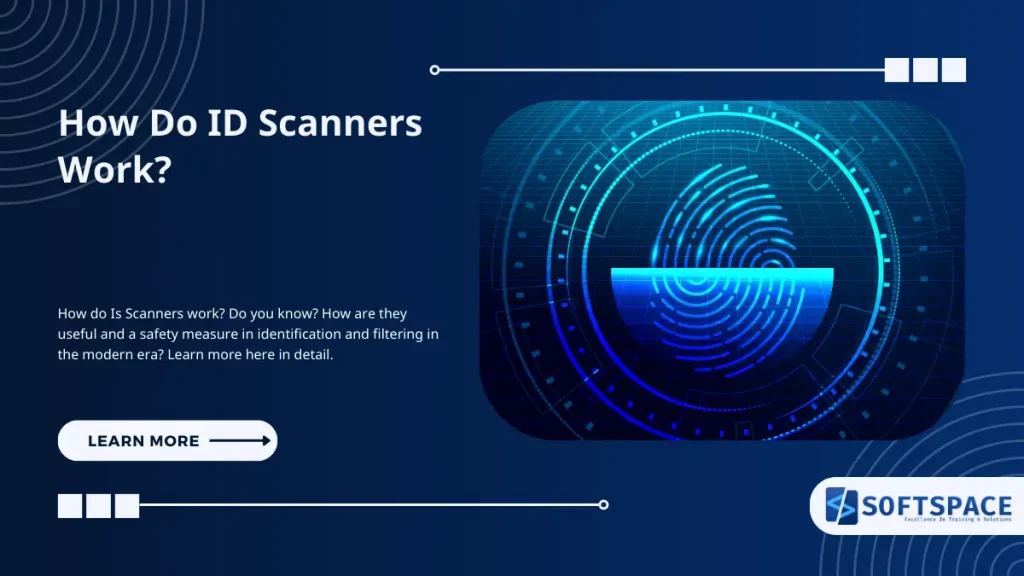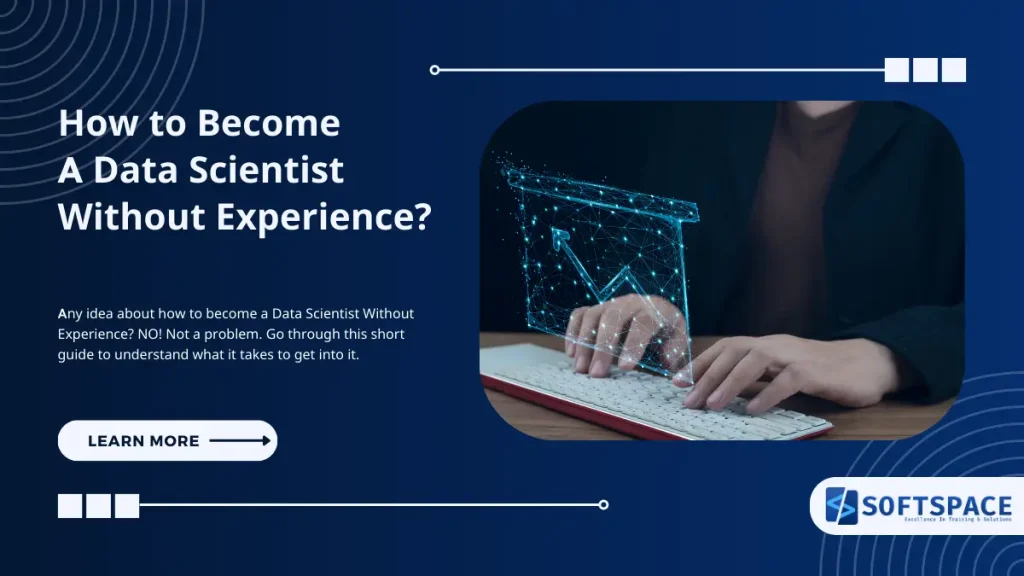In today’s fast-paced world, identity verification has become a crucial part of security, compliance, and customer service across various industries—from nightclubs and retail stores to airports and government offices. At the heart of this process lies a powerful yet often misunderstood tool: the ID scanner.
But how do ID scanners work? What information do they collect, and how secure is the process? Whether you’re a business owner, event organiser, or simply curious about the technology, understanding how ID scanners function can help you make informed decisions about their use and implications.
In this blog, we’ll discuss “How Do ID Scanners Work?”, their types available, and what you really need to know before using or interacting with one.

What Are ID Scanners?
ID scanners are electronic devices designed to read and verify identification documents, such as driver’s licenses, passports, or government-issued IDs. Unlike manual checks, which rely on human judgment, ID scanners use advanced technology to authenticate documents, extract data, and flag potential issues like fraud or underage access.
They’re widely used in settings requiring age verification, access control, or identity confirmation, including nightlife venues, retail, healthcare, and transportation hubs. ID scanners like those offered by OCR Studio come in various forms, from handheld devices to desktop units and mobile apps. Their core function is to ensure that an ID is legitimate and matches the presenter, reducing the risk of human error and enhancing operational efficiency.
How Do ID Scanners Work?
The operation of an ID scanner involves a combination of hardware and software working in tandem to process identification documents. Here’s a step-by-step breakdown of the process:
Scanning the ID
The process begins when an ID is presented to the scanner. Depending on the device, the ID may be swiped (for magnetic stripes), inserted (for chip-based IDs), or scanned optically (for barcodes or printed text). Most modern IDs contain one or more of these features:
- Magnetic stripes: Found on driver’s licenses, these store basic information like name, date of birth, and ID number.
- Barcodes or QR codes: Common on U.S. driver’s licenses, these encode data in a machine-readable format.
- Smart chips: Used in passports and some IDs, these store encrypted data for enhanced security.
- Printed text: Includes visible details like names and addresses, readable via optical scanning.
Data Extraction
Once scanned, the device uses Optical Character Recognition or specialised software to decode and extract data. For example, a barcode might reveal the holder’s name, date of birth, address, and ID expiration date. Smart chips may provide additional details, such as biometric data or digital signatures, depending on the ID’s design.
Verification and Authentication
The extracted data is then cross-checked to ensure authenticity. This may involve:
- Format validation: Confirming the ID adheres to the issuing authority’s standards (a U.S. driver’s license follows AAMVA guidelines).
- Tamper detection: Analysing security features like holograms, UV elements, or microtext to detect fakes.
- Database checks: Some advanced scanners connect to external databases to verify the ID’s status (checking for revoked licenses).
- Age verification: For venues like bars, the scanner calculates the holder’s age based on their birth date to ensure compliance with age restrictions.
Output and Action
After verification, the scanner displays the results on a screen or generates a report. For instance, a nightclub scanner might show a green light for valid IDs or a red light for fakes or underage individuals. Some systems store data for record-keeping (where permitted by law) or integrate with other tools, like customer management software.
Different types of ID Scanners
Absolutely! Here’s the same info in plain text, without HTML tags:
1. Magnetic Stripe Readers (MSR):
These scanners read the magnetic stripe on the back of IDs, similar to those on credit cards. They are fast and cost-effective, commonly used in retail and low-security environments. However, they can be easily fooled by fake stripes and don’t verify visual ID details like the photo or hologram.
2. Barcode Scanners (1D/2D):
These scanners read 1D or 2D barcodes (like PDF417 or QR codes) from the back of an ID. They are widely used due to their speed and simplicity. While they can quickly extract personal data, they can’t verify the authenticity of the card’s physical features and are susceptible to barcode duplication.
3. Optical Scanners with OCR (Optical Character Recognition):
These devices visually scan the ID and use OCR to extract text from the image. They are capable of reading worn-out or damaged cards and capturing more complete data. However, they can be slower than barcode scanners and may be affected by poor lighting or image quality.
4. Smart ID Scanners (AI-Enhanced):
These scanners combine barcode scanning, OCR, and artificial intelligence to detect forgeries, compare facial features, and validate IDs in real time. They are highly accurate and secure, learning and adapting over time. The trade-off is higher cost and the need for network access in some cases.
5. Desktop ID Scanners:
These are stationary scanners often found in high-security areas like government offices, banks, and airports. They offer high precision and can scan both sides of an ID or passport, often integrated with facial recognition and database checks. However, they are not portable and usually more expensive.
6. Mobile ID Scanners:
These are handheld or smartphone-based scanners that use the device’s camera or an external reader to scan IDs. They are convenient, flexible, and ideal for events or mobile services. Their effectiveness depends on camera quality, app performance, and environmental lighting.
7. Document Scanners (Passport/ID Readers):
Specifically designed to scan official travel documents like passports and national IDs, these scanners read the machine-readable zone (MRZ) and are widely used at borders, embassies, and airports. They provide high accuracy and security, but may be excessive for basic ID verification needs.
✅ Advantages of ID Scanners
1. Improved Security
- Verifies identity quickly and accurately.
- Flags fake or expired IDs.
- Can be integrated with watchlists (e.g., for banned patrons or security threats).
2. Age Verification
- Essential for businesses that sell age-restricted products (alcohol, tobacco, cannabis).
- Reduces liability by ensuring compliance with legal requirements.
3. Data Collection
- Stores information (with consent or in compliance with regulations) for marketing, analytics, or contact tracing.
- Helps identify repeat customers or track visitor patterns.
4. Efficiency and Speed
- Speeds up entry/check-in processes.
- Reduces the need for manual ID checks, minimizing human error.
5. Fraud Detection
- Many scanners can detect tampered, forged, or cloned IDs.
- Cross-checks data against databases (e.g., DMV, law enforcement) in some setups.
❌ Disadvantages of ID Scanners
1. Privacy Concerns
- Scanners may store personal data (name, address, DOB), raising privacy and data protection issues.
- Vulnerable to misuse or data breaches if not properly secured.
2. False Positives/Negatives
- Poor-quality scanners might flag legitimate IDs as fake, or miss well-made counterfeits.
- Errors can lead to unjust denials or customer frustration.
3. Legal & Regulatory Compliance
- Businesses must comply with data protection laws (like GDPR or CCPA).
- Retention of data may require consent or notification, and mishandling can lead to penalties.
4. Cost and Maintenance
- High-quality scanners can be expensive.
- Ongoing costs include software updates, database access, and technical support.
5. Dependency on Technology
- Staff may become overly reliant and neglect manual ID-checking skills.
- A system crash, power outage, or internet failure can halt operations.
🤖 How AI Supports ID Scanners
1. Fake ID Detection
- AI-powered image analysis can detect micro-patterns, font inconsistencies, or altered elements that human eyes or basic scanners might miss.
- Deep learning models are trained on huge datasets of real and fake IDs to spot even sophisticated forgeries.
2. Facial Recognition
- AI compares the face on the ID with the person presenting it using facial matching algorithms.
- Helps ensure the person using the ID is the rightful owner, reducing identity fraud.
3. Smart Data Extraction (OCR)
- AI-driven Optical Character Recognition (OCR) reads text from IDs quickly and accurately—even if the card is scratched, dirty, or scanned at an angle.
- Extracts details like name, birthdate, and ID number to automate verification or form filling.
4. Behavioural Pattern Analysis
- AI can track patterns in how often certain IDs are scanned (e.g., reused IDs, suspicious visit times).
- Useful in spotting fraudulent behaviour or enforcing bans in clubs, casinos, or other restricted areas.
5. Real-Time Decision Making
- AI can make instant decisions based on scanned data (e.g., deny entry if underage, alert security if flagged).
- Faster than manual review, especially in high-traffic environments.
6. Continuous Learning
- AI models improve over time as they process more scans.
- They adapt to new types of IDs, updated security features, and emerging forgery techniques.
🔐 AI in Action – Real-World Use Cases
- Nightclubs & Bars: Scan IDs at the door, verify age, flag fake IDs, and use facial recognition to enforce bans.
- Airports & Borders: Compare passport photo to live face, check ID against watchlists in real time.
- Retail: Automate age verification at self-checkouts for alcohol/tobacco purchases.
- Hotels: Speed up check-in, verify guests against booking records, or detect identity theft.
Conclusion
ID scanners are more than just digital tools for checking age or verifying identity—they’re part of a larger system that supports safety, efficiency, and compliance in modern-day operations. By understanding how these devices work and what data they process, individuals and businesses can better appreciate their value while ensuring privacy and ethical use. Whether you’re planning to implement them at your venue or just want to stay informed, being aware of how ID scanners function is essential in our increasingly digitised world.

13+ Yrs Experienced Career Counsellor & Skill Development Trainer | Educator | Digital & Content Strategist. Helping freshers and graduates make sound career choices through practical consultation. Guest faculty and Digital Marketing trainer working on building a skill development brand in Softspace Solutions. A passionate writer in core technical topics related to career growth.



